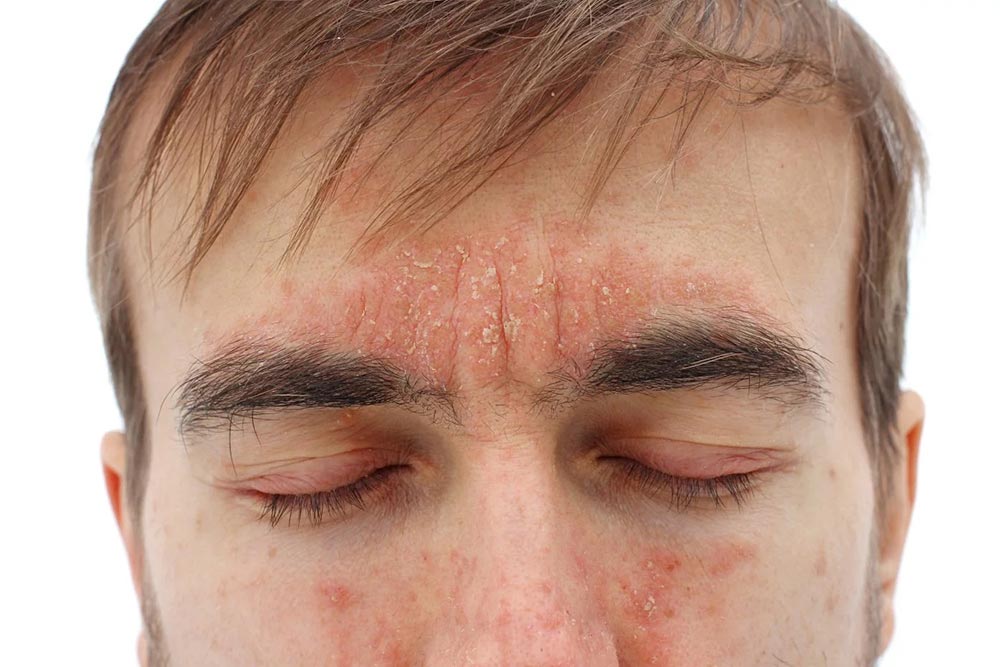Table of Contents
There are five types of psoriasis:
- plaque
- guttate
- inverse
- pustular
- erythrodermic
Most often psoriasis appears in areas like:
- Elbows
- Knees
- Scalp
- Lower back
Basics of Psoriasis
Psoriasis is a chronic (long-lasting) skin disease of scaling and inflammation that affects greater than 3 percent of the U.S. population, or more than 5 million adults. The word “psoriasis” is from a Greek word meaning “itch.” It can start at any age but most commonly appears for the first time between ages 15 and 35 years.
What are the symptoms of psoriasis?
The typical symptoms of psoriasis include:
- Red patches of skin covered with thick, silvery scales
- Small scaling spots (commonly seen in children)
- Dry, cracked skin that may bleed
- Itching, burning or soreness
- Thickened, pitted or ridged nails
Swollen and stiff jointsWhat causes psoriasis?
The cause of psoriasis is unknown but involves at least three important factors: a genetic predisposition, an immune system abnormality and environmental factors. The genes responsible for psoriasis have been identified and it is known to run in families. In fact, approximately one-third of people with psoriasis have a family member with the disorder. However, only about 2 to 3 percent of people who have a parent with psoriasis develop the disease
Checking Your Scalp
Scalp exams are a simple way for you to check your own head. They allow you to see if anything looks unusual. You will have a better chance of finding melanoma early if you know what is normal for you and check your scalp regularly.
As part of a skin self-exam, use a hand mirror to look at the back of your scalp in a well-lit room. Ask someone to help you look at the back of your head, or use two mirrors to help you see this area.
Scalp problems are common and can be caused by a number of conditions. Some conditions, such as dry scalp or dandruff, are harmless. Others, like ringworm, are contagious.
Check your scalp for these signs and symptoms:
- Redness and irritation
- Scaling that may be: White, flaky
- Greasy and yellowish
- Crusting
- Oozing or bleeding
- Itching that may be intense
- Pain
Scalp Psoriasis Treatment
Scalp psoriasis treatment varies depending on the severity of your condition.
Home remedies
If you have mild psoriasis, these over-the-counter products may help:
Shampoos and cleansers. Washing with a tar shampoo can be soothing and helpful. Medicated shampoos such as salicylic acid, coal tar, zinc pyrithione, selenium sulfide and ketoconazole also can be beneficial.
Leave-on products. After you wash your hair, make sure it’s completely dry before applying any medicated product or oil to your scalp. Oils are best applied at night, allowing them to soak into the skin overnight.
Combination treatments. Some products combine two or more active ingredients to treat different symptoms of scalp psoriasis. These products are helpful for treating both plaque and thin plaques (erythrodermic) psoriasis.
Topical prescription medications
If home remedies aren’t effective in treating your scalp psoriasis, talk to your doctor about these topical prescriptions:
Topical corticosteroids. These are available in various strengths and formulations that include lotions, solutions and sprays.

